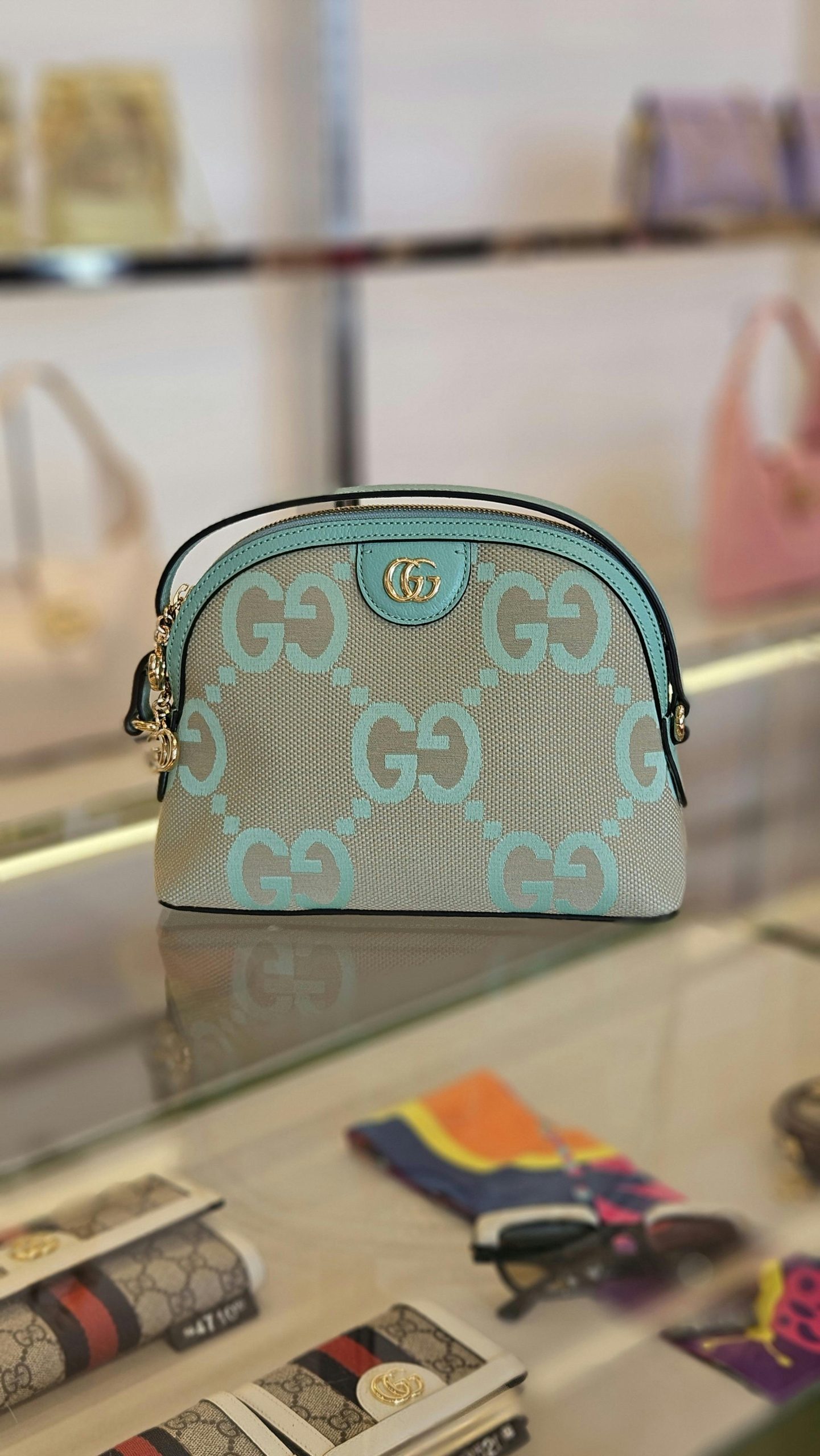Investing in a designer bag means balancing timeless style with lasting value. Knowing which brands and models appreciate can turn a luxury purchase into a smart asset. From iconic classics to rising stars, understanding market trends and authenticity ensures your bag remains both fashionable and financially sound for years to come.
Essential factors to determine if a designer bag is a wise financial investment
Understanding what drives luxury handbag value appreciation can help you make smarter buying decisions. The most critical factor is the brand’s reputation—names like Chanel, Hermès, and Louis Vuitton consistently retain or grow in value. Expert craftsmanship, choice of high-quality materials, and classic design play pivotal roles in handbag longevity and value retention. Seasonal or overly trendy styles often underperform, while iconic or limited-edition releases with distinct brand signatures tend to secure high resale prices. Click here for more information.
Also to discover : The ultimate guide to fear of god mules: style and comfort
Comparing classic handbag styles and trendy bags illustrates differences in long-term potential. Timeless models—such as the Chanel Classic Flap, Hermès Birkin, and Dior Lady Dior—regularly achieve resale values at or above their original retail price, sometimes exceeding 125%. Meanwhile, trend-driven pieces may initially spike in popularity but usually depreciate rapidly as tastes shift and fashion cycles evolve.
Thorough research into current designer bag market trends and resale data is crucial for any investor. Monitoring platforms like resale sites and auction results helps assess the performance of specific models and anticipate demand. Prioritize bags with enduring silhouettes, versatile colorways, and legendary status to ensure optimal value retention over time.
Also to read : Discover the ultimate balenciaga scarves to enhance your wardrobe
Leading designer bag brands and styles with proven investment value
Chanel Classic Flap, Single Flap Top Handle, and Wallet on Chain: value retention and ongoing demand
Chanel’s Classic Flap remains an iconic designer bag with unmatched resale results—often retaining 110% or more of its retail price. In 2025, both the Classic Single Flap Top Handle and Wallet on Chain excelled in luxury handbag value appreciation due to their practical design and continued popularity. Best brands for bag investments frequently cite Chanel for its consistent reliability, with modern reinterpretations and limited editions amplifying demand and reinforcing collectability.
Hermès Birkin 35 and Kelly: benchmarks for investment and value growth
The Hermès Birkin 35 and Kelly models set standards for luxury handbag value appreciation—the Birkin 35 averaging 134% of its original retail price. These best investment handbags 2025 represent appreciation handbag brands at their peak, offering impressive value retention recognized by auction results and expert guides alike. Their vintage designer handbag demand is further driven by rarity and enduring prestige.
Gucci Jackie 1961, Horsebit 1955: heritage, reissues, and market appreciation
Gucci’s Jackie 1961 and Horsebit 1955 demonstrate how a blend of heritage style and reissues influence designer purse resale value. Both are iconic designer bags with rising demand; their collectible status is confirmed by strong secondary market trends.
Fendi Baguette, Dior Saddle and Lady Dior: vintage icons with strong collector demand
Classic handbag styles like the Fendi Baguette and Dior Saddle experience high vintage designer handbag demand. The Lady Dior, especially in rare editions, sustains top-tier resale values, confirming their place as best brands for bag investments.
The Row’s Margaux, Loewe Puzzle Tote, Bottega Veneta Andiamo, and rising contemporary classics
Contemporary pieces such as The Row’s Margaux bag and Loewe’s Puzzle Tote now join traditional icons among best investment handbags 2025. Their rapid appreciation, scarcity, and hype spark new trends in luxury handbag value appreciation, attracting a wider range of investors seeking versatility and modernity.
Current and Emerging Market Trends Influencing Handbag Investments
Handbag market demand analysis highlights an increase in value for classic models, as seen in the 2025 performance of the Gucci Jackie 1961 and the Chanel Classic Flap. Resale value for these bags continues to surge—Chanel’s Classic Flap Top Handle now achieves about 110% value retention, confirming the dominance of classic handbag styles value over short-lived trends. Designer bag market trends demonstrate that vintage models and “quiet luxury” pieces, such as The Row’s Margaux or Celine’s Triomphe Nimo, are outperforming more conspicuously logoed releases in the current climate.
Handbag investment future predictions suggest an amplified focus on exclusivity and scarcity. Limited production runs, as with the Row Margaux or Toteme T-Lock, play a vital role in handbag market fluctuations and ensure resale value grows sharply—Toteme’s T-Lock currently resells for 182% of its original retail. Designers are responding by restricting supply to boost allure, and celebrity endorsements further spike interest, as witnessed with the Lady Dior and Balenciaga City bags.
The push-pull between classic vs trendy bags for investment is evident. Y2K resurgence (sparked by Fendi Baguette, Chloé Paddington and oversized totes) reflects a revived appetite for playful, archival shapes, but data-driven results already show seasonless icons offer the most consistent luxury handbag value appreciation.
How to assess investment potential and authenticity of designer handbags
Key indicators of an investment-worthy bag: rarity, provenance, and recognizability
When evaluating investment potential, focus on rarity, confirmed provenance, and brand recognizability. Bags such as the Hermès Birkin demonstrate strong investment value because limited production and a traceable history often drive up interest. Recognizable features—iconic logos or established silhouettes—signal authentic, investment-worthy bags. Learn how to spot investment-worthy bags by considering these elements alongside handbag rarity and investment potential.
Reliable authentication services and avoiding counterfeits
Ensuring you have the real item is essential. Leverage trusted authentication of designer bags providers or experts specializing in authenticating vintage purses. Third-party authentication services often evaluate materials, stitching, and serial numbers. Relying on these safeguards reduces the risk of counterfeits, which can damage both the enjoyment and the resale value of your piece.
Grading, certificates, and understanding condition impacts
Handbag condition grading uses criteria from pristine to fair, affecting future resale value. Importance is placed on handbag authenticity certificates—these documents verify original status and can justify higher prices. When investing in high-value pieces, prioritizing authentication of designer bags, certification, and proper grading protects your investment and supports handbag value appreciation. Proper grading is also essential when authenticating vintage purses.
Best practices for buying, storing, and maintaining investment bags
Purchase advice: sourcing from authorised retailers and reputable resale platforms
When learning how to buy an investment bag, source from authorised retailers or reputable resale platforms to maximize the security and value of your purchase. An authentic bag, with documentation verifying its provenance, underpins future luxury handbag value appreciation. Confirming authenticity through trusted channels reduces the risk of counterfeiting and helps in preserving designer purse resale value. Investing in high-end bags from established platforms also guarantees condition grading, a major influence on long-term value retention. Handbag collector advice frequently highlights the importance of avoiding impulsive trends in favor of seasonless styles from top brands to enhance your portfolio’s stability.
Storage and cleaning techniques critical for value preservation
Storing luxury bags properly safeguards against physical damage and environmental wear, both of which strongly impact handbag investment return on investment. Use dust bags, structured inserts, and climate-controlled spaces to avoid sagging or discoloration. If you plan to sell, knowing how to clean designer bags for resale—using gentle, non-invasive methods—will aid in maintaining flawless condition. Most handbag maintenance tips for investors recommend regular inspections and cautious cleaning, particularly for rare leather handbag investments and limited edition handbags resale. Proper care supports both the longevity and value of your best investment handbags 2025.
Insurance and expert repair for protecting your investment
Insure designer bags as part of a comprehensive handbag investment insurance plan to cover theft, damage, or loss. Handbag repair for value preservation, undertaken by professional specialists, ensures that any restoration aligns with authentic materials and craftsmanship standards. This two-pronged approach minimizes risk while sustaining luxury handbag value appreciation and resale price potential.
Insights on resale platforms, pricing, and selling strategies
Comparing top resale platforms for maximum value
Selecting the right resale platforms for luxury handbags is the most impactful factor in maximizing sales returns. Each marketplace tailors its experience—some prioritize fast turnover, while others cater to niche collectors hunting for rare finds, including limited edition handbags resale opportunities. Sellers aiming for handbag resale profitability find platforms like Vestiaire Collective, The RealReal, and Fashionphile lead the pack in authentication and large buyer pools, which can result in higher asking prices for in-demand models. For those exploring handbag resale platforms comparison, it is essential to weigh commission structures and additional services such as handling, shipping, and professional photos—these affect the overall profit margin.
Timing, demand cycles, and negotiation tactics for sellers
To optimize handbag resale profitability, sellers track demand peaks—seasonal events, celebrity endorsements, or limited drops can spike interest and elevate prices. Utilizing effective handbag resale price negotiation tips, such as starting with a slightly higher price to allow room for offers, encourages engagement and faster sales. Knowing the right moment in a brand’s demand cycle enhances profit; for instance, the resale market reacts quickly to newly trending or discontinued bags, especially within the context of limited edition handbags resale patterns.
Case studies: High achieving sales and lessons learned
Bags like Chanel’s Classic Flap or limited Toteme T-Lock illustrate how exclusivity and condition, paired with the right resale platforms for luxury handbags, yield higher selling prices. Sellers who combine market analysis, timing, and adaptable negotiation strategies consistently realize stronger handbag resale profitability than those relying on a single approach. For sellers, leveraging handbag resale platforms comparison insights builds confidence when navigating this dynamic and evolving market.
Expert advice, common pitfalls, and tips for first-time bag investors
Essential tips from collectors and industry insiders
Start with brands celebrated for handbag investment tips and strong resale histories. Chanel, Hermès, and Gucci remain key players—collectors note these names lead value retention year after year. Seasoned bag investors recommend seeking classic styles since iconic designer bags, like the Chanel Flap or Birkin, offer reliable appreciation. Prioritize excellent condition and original packaging; these features noticeably boost luxury handbag value appreciation, especially for rare or limited releases.
Mistakes to avoid in purchasing and caring for investment bags
First-time handbag investors often rush purchases or overlook vital authentication details. Authentication of designer bags is paramount—market experts advise leveraging reputable authentication services. Inadequate storage leads to reduced value retention; storing luxury bags properly, away from sunlight and with supportive fillers, preserves investment potential. Avoid over-cleaning or using harsh products, as improper care can permanently diminish both aesthetics and designer purse resale value.
Diversifying a handbag investment portfolio for optimal returns
Don’t rely solely on one brand or silhouette. Experienced collectors use guides on handbag investment portfolio diversification, spreading investments across luxury houses and styles. Mix coveted classic handbag styles with emerging designers showing upward market trends for healthy portfolio growth. This approach supports resilience against market changes and captures new opportunities in luxury handbag value appreciation.











